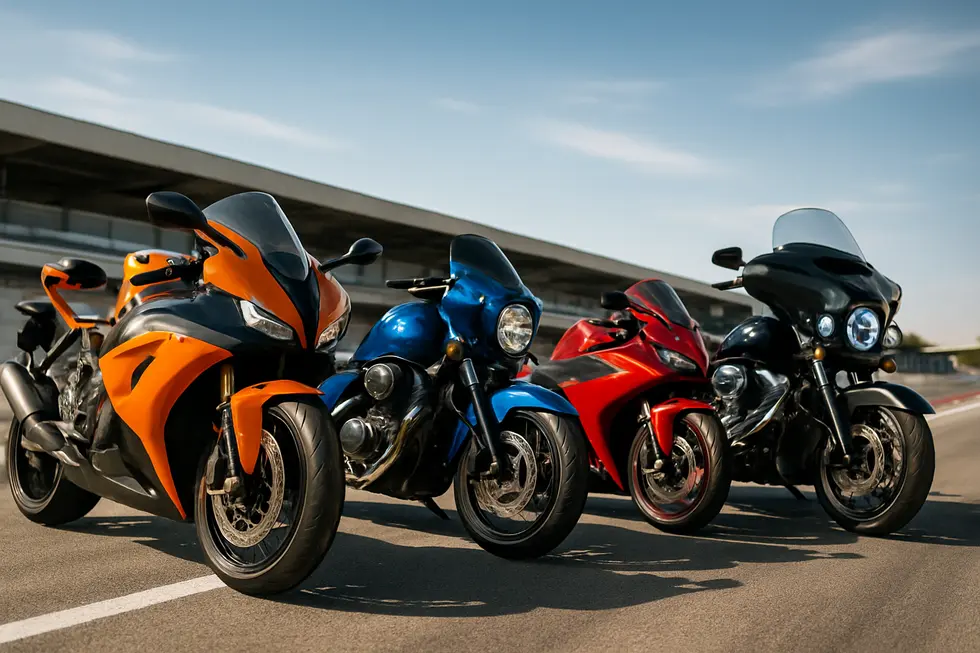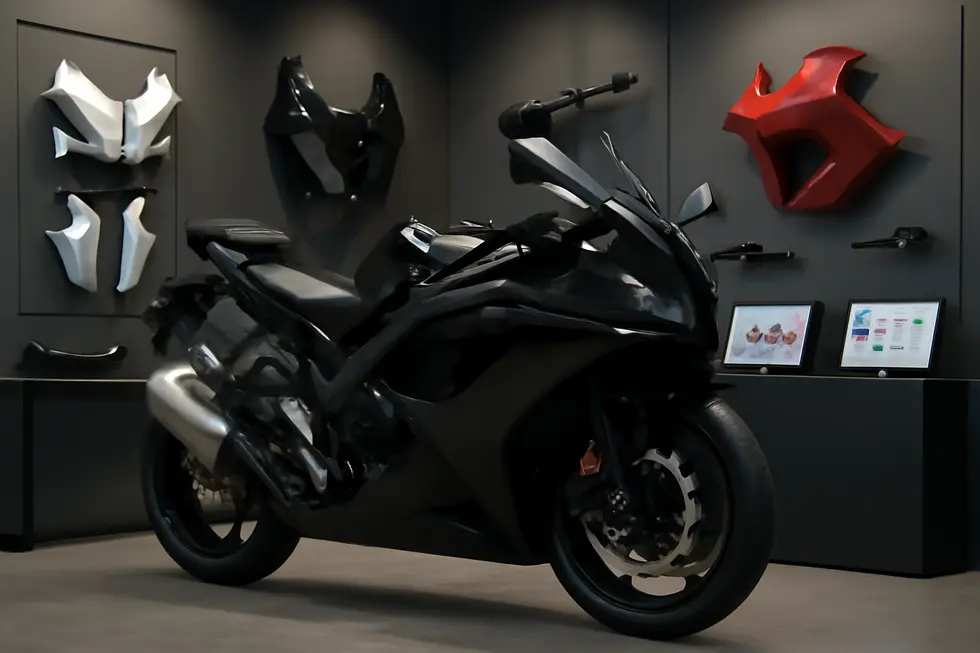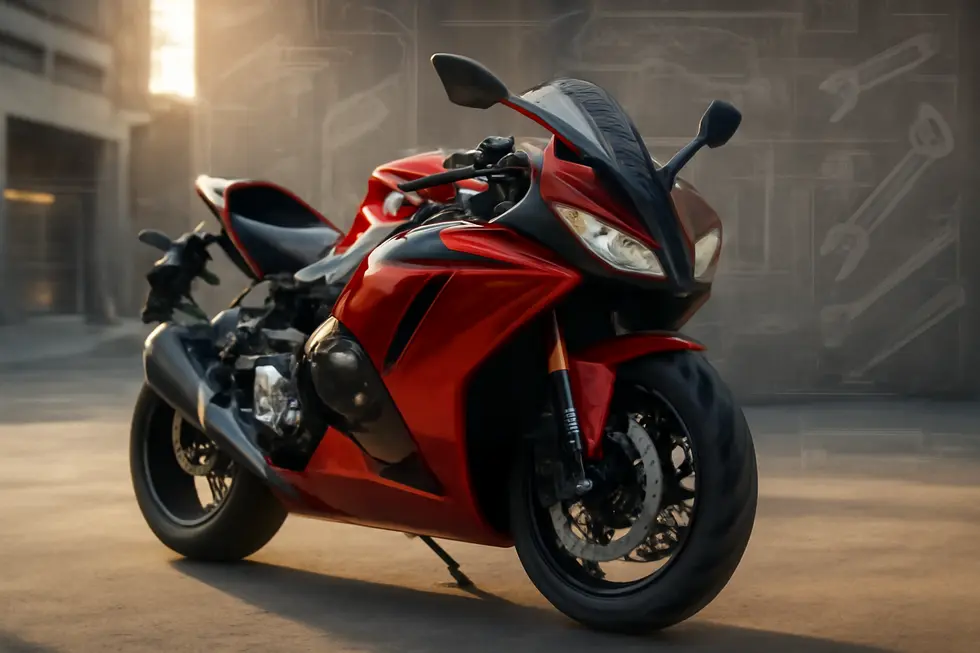Understanding Motorcycle Fairings: Enhancing Performance and Protection
August 19, 2025 | by summitfairings

Introduction
Motorcycle fairings are critical components that play an essential role in enhancing a bike’s aerodynamic efficiency, rider comfort, and overall performance. For business owners in the motorcycle industry, understanding the significance of fairings extends beyond style—it directly impacts product value, customer satisfaction, and competitive edge. This article breaks down the core aspects of motorcycle fairings: starting with the various types available to suit different needs and preferences, then illustrating their tangible benefits in reducing drag and improving handling, and finally delving into the structural components and mounting systems that ensure fairings remain secure and effective even under high-speed conditions. Together, these chapters provide a comprehensive overview that highlights why fairings are not only vital for riders but also valuable assets to businesses operating within the motorcycle market.
Tables of Contents
Chapter 1: Different Types of Fairings on a Motorcycle: Understanding What is the Fairing on a Motorcycle
- The Power of Full Fairings: Unlocking Maximum Aerodynamics and Protection on Motorcycles
- The Subtle Impact of Half and Bikini Fairings on Aerodynamics and Rider Comfort
- The Shape and Function of Batwing Fairings: Enhancing Rider Comfort and Aerodynamics on Touring Motorcycles
- Balancing Performance and Comfort: The Distinct Roles of Sport and Touring Fairings
- Innovations in Materials and Custom Designs Elevating Motorcycle Fairing Performance and Style
Chapter 2: Aerodynamic and Performance Benefits of What is the Fairing on a Motorcycle
- How Motorcycle Fairings Shape Aerodynamics to Boost Speed and Stability
- How Motorcycle Fairings Transform Performance through Aerodynamics and Rider Protection
- How Motorcycle Fairings Protect Riders and Enhance High-Speed Stability
- Crafting Speed and Stability: Material and Design Innovations in Motorcycle Fairings
- Maintaining Peak Aerodynamics: The Crucial Balance Between Fairing Efficiency and Upkeep
Chapter 3: Structural Components and Mounting: Exploring What is the Fairing on a Motorcycle
- Composite Materials and Mounting Precision: Ensuring Fairing Strength and Stability on Motorcycles
- Secure Attachment and Advanced Mounting Systems That Shape Motorcycle Fairings
- How Motorcycle Fairings Shape Aerodynamics and Boost Performance Through Smart Mounting
- How Motorcycle Fairings Enhance Rider Protection and Structural Safety
- Innovative Fairing Designs and Secure Mounting: A Structural Insight into Motorcycle Fairings
Chapter 1: Different Types of Fairings on a Motorcycle: Understanding What is the Fairing on a Motorcycle
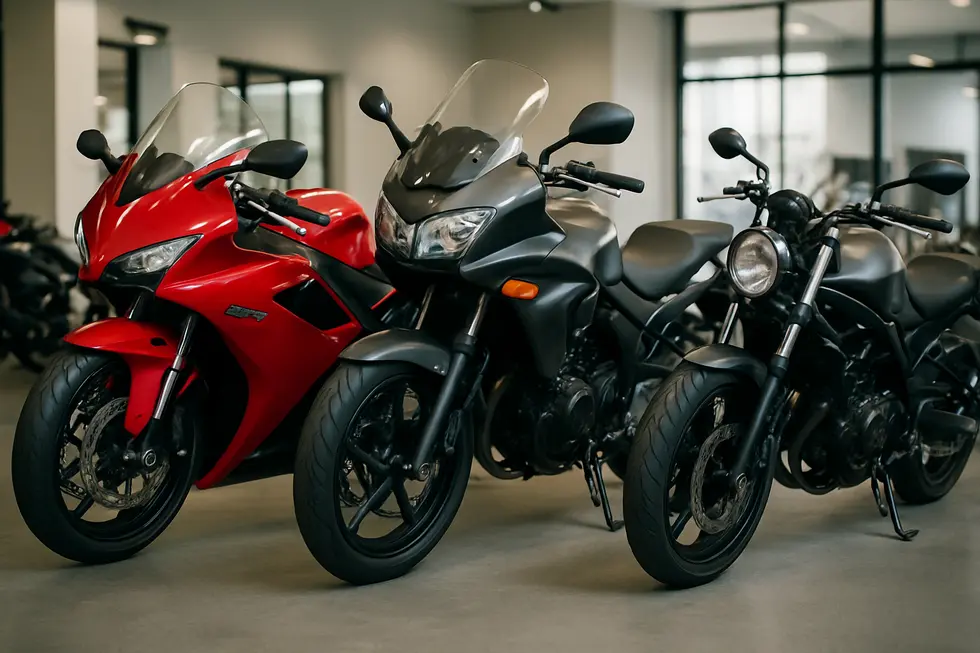
1. The Power of Full Fairings: Unlocking Maximum Aerodynamics and Protection on Motorcycles
A full fairing on a motorcycle stands as the most extensive form of aerodynamic bodywork, enveloping nearly the entire front and sides of the bike. Unlike partial fairings, it integrates protective coverage for critical components such as the engine, frame, handlebars, headlight, and instrument panel. This all-encompassing design achieves maximum reduction in air resistance, allowing the motorcycle to slice through wind with greater efficiency. The seamless shape of a full fairing directs airflow smoothly around the bike, reducing drag and minimizing turbulence that can destabilize the rider at high speeds.
Beyond aerodynamic benefits, full fairings provide substantial protection. By shielding the rider from wind blast, debris, and precipitation, they enhance comfort and reduce fatigue on long or fast rides. The integrated windscreen deflects air over and around the rider, which also improves concentration and safety during spirited riding or racing contexts.
Specialized full fairings, commonly seen on racing motorcycles, are engineered to meet intense performance demands. These designs emphasize drag reduction and stability, sometimes incorporating aerodynamic wings or ducts that generate downforce to keep the front wheel planted and improve cornering capabilities. Such innovations not only foster better speed and control but also aid engine cooling by channeling airflow to critical heat-sensitive areas.
Ergonomics within full fairing construction are finely tuned to balance rider comfort and optimal control, enabling confident handling during aggressive riding. This combination of aerodynamic precision, protective coverage, and rider-focused design explains why full fairings dominate sport bike and racing motorcycle categories.
For a richer, visual exploration of full and race fairings, the YouTube videos “What Is A Full Motorcycle Fairing?” and “What Is A Race Motorcycle Fairing?” provide detailed insights into their engineering and purpose. Further resources on the subject can be found at Explore the Best Motorcycle Fairings at Summit Fairings.
2. The Subtle Impact of Half and Bikini Fairings on Aerodynamics and Rider Comfort
Motorcycle fairings vary widely in coverage and purpose, with half and bikini fairings offering distinctive blends of aerodynamic benefits and rider comfort. Half fairings are designed to shield only the upper front portion of the motorcycle, typically wrapping around the windshield, headlight, instrument panel, and handlebars. This selective coverage effectively reduces wind resistance aimed at the rider’s torso and head, enhancing comfort during longer rides or at higher speeds without the added weight and bulk of full fairings. Although they do not protect the lower parts of the bike or the rider’s legs, their balance between aerodynamic efficiency and lightweight structure appeals to those who want some protection without fully enclosing the motorcycle.
Bikini fairings represent a more minimalistic approach. Usually fitted just around the headlight area, they include a small windshield or cowl that provides minimal wind deflection but contributes to a sleeker design and modest aerodynamic improvement. Their limited coverage keeps weight very low and maintains easy access to engine components, appealing to riders who favor style and simplicity over comprehensive protection. However, bikini fairings offer only scant defense against wind, rain, or debris.
Both half and bikini fairings utilize robust mounting systems called fairing stays to maintain stability and prevent vibration or detachment at speed, preserving their aerodynamic effectiveness. The choice between these fairings is often dictated by rider priorities—whether favoring enhanced comfort and wind resistance in varying conditions, or opting for a lighter, more exposed riding experience.
Understanding these fairing types clarifies how subtle aerodynamic changes influence handling and rider endurance, especially when contrasted with full fairings designed for maximum enclosure and protection. More insight into these options can be found in detailed discussions such as explore summit fairings, your go-to destination for motorcycle fairings.
For a visual and practical breakdown of half and full motorcycle fairings, videos like “What Is A Half Motorcycle Fairing?” and “What Is A Full Motorcycle Fairing?” offer clear examples and comparisons.
3. The Shape and Function of Batwing Fairings: Enhancing Rider Comfort and Aerodynamics on Touring Motorcycles
Batwing fairings represent a distinct and practical style of motorcycle fairing, instantly recognizable by their wide, wing-like extensions that sweep out from the front of the bike. Unlike full fairings found on sportbikes that prioritize maximum aerodynamic efficiency, batwing fairings are tailored specifically for touring motorcycles where rider comfort over long distances is a priority. Their broad design effectively channels airflow around the rider, which significantly reduces wind fatigue and buffeting during extended trips, contributing to a more relaxed riding experience.
Functionally, batwing fairings offer more than just wind deflection. They often integrate split-stream vents that allow controlled airflow to pass through, reducing the heaving head buffeting that can occur at certain speeds. This subtle balancing of air pressure increases stability, enabling more controlled handling without sacrificing protection. Structurally, these fairings are mounted securely to the motorcycle frame to remain steady under the variable forces of wind and vibration.
Beyond their aerodynamic benefits, batwing fairings serve as a customizable platform for accessories such as adjustable windshields, wind deflectors, and even audio speaker systems. This adaptability appeals to touring riders who seek both comfort and functionality tailored to their specific needs. Aesthetically, the batwing fairing is iconic within cruiser and touring communities, contributing to a timeless and recognizable style that blends form with function.
When compared to other fairing types like half fairings or naked designs, batwing fairings strike a unique balance between wind protection and rider engagement. They do not envelop the bike completely like full fairings but offer considerably more shield than minimal fairings, making them ideal for the demands of long-distance travel. For riders curious about exploring options or upgrades within this style, resources such as explore the best motorcycle fairings at Summit Fairings provide a variety of choices tailored to touring motorcycles.
By combining functional wind management with customizable features and classic design, batwing fairings continue to be a key element in enhancing the touring rider’s experience, emphasizing comfort without compromising the distinctive look of their motorcycles.
4. Balancing Performance and Comfort: The Distinct Roles of Sport and Touring Fairings
Sport and Touring Fairings: Tailoring Aerodynamics to Riding Style
Motorcycle fairings serve critical, yet distinct roles depending on whether they are designed for sport or touring use. Sport fairings focus primarily on enhancing aerodynamic efficiency to maximize speed, handling, and stability during high-performance riding. Typically, these fairings come in full or half configurations. Full sport fairings envelop most of the front and sides, including key components such as the engine and handlebars, sharply reducing wind resistance and protecting the rider from turbulent airflow. Half fairings offer a lighter alternative by covering just the upper front section—headlight, windshield, and instrument panel—balancing aerodynamic benefits with agility and easier maintenance. This streamlined design is essential in racing and aggressive riding scenarios where every reduction in drag influences performance.
Conversely, touring fairings prioritize rider comfort and protection during long-distance journeys. These fairings are generally larger and cover more of the motorcycle’s front, featuring broader windscreens that shield riders from wind, rain, and debris over extended periods. Unlike sport fairings, touring designs do not emphasize extreme aerodynamic refinement; rather, they incorporate additional elements such as integrated storage compartments and ergonomic shaping to reduce fatigue and exposure. Their focus lies in providing a stable and comfortable riding environment, where wind buffeting is minimized, and weather resistance is enhanced.
While both fairing types improve stability and rider protection, their design philosophies cater to divergent needs: sport fairings aim to sharpen speed and handling through aerodynamic precision, whereas touring fairings envelop riders in comfort and shielding for enduring rides. Understanding these differences helps riders select fairings that best suit their style and requirements.
For riders interested in exploring a wide variety of well-crafted fairings that address both performance and comfort, resources like Explore the Best Motorcycle Fairings at Summit Fairings offer valuable insights.
Additionally, visual and detailed explanations on race motorcycle fairings and full fairings can be found in authoritative external sources such as The Racing Xpert videos, which effectively demonstrate how aerodynamic design varies across motorcycle categories.
5. Innovations in Materials and Custom Designs Elevating Motorcycle Fairing Performance and Style
Motorcycle fairings, beyond their aerodynamic purpose, have evolved significantly through the choice of materials and customization options. Traditionally, fiberglass has been the go-to material due to its balance of cost-efficiency and decent strength-to-weight ratio. It remains popular for many full fairings that cover large portions of the bike’s front and sides, providing effective wind and debris protection while keeping weight manageable.
For racing motorcycles, where every gram matters, carbon fiber is often preferred. This composite offers an exceptional strength-to-weight ratio and superior rigidity, making it ideal for high-speed stability and quick handling. Racing fairings frequently feature carbon fiber or a blend of fiberglass with carbon reinforcement to achieve the best combination of durability and lightness.
ABS plastic, meanwhile, dominates in many mass-produced bikes for its durability and impact resistance. It allows manufacturers to produce complex shapes and integrated parts, including vents and aerodynamic extensions, which are essential for modern performance and cooling efficiency.
Customization trends have surged with the advent of advanced manufacturing technologies like 3D printing. This enables enthusiasts to create bespoke fairings using reinforced polymers, which are both lightweight and strong. Such technology supports rapid prototyping and tailored designs that enhance both aesthetics and functionality.
Modern fairings are no longer simple shells; they often incorporate aerodynamic wings, vents, and reshaped windshields that generate downforce and guide airflow to critical areas like the engine. These features improve cooling and stability, as seen in pioneering models that optimize airflow to reduce front wheel lift and enhance rider comfort.
These material advancements and design innovations collectively push the boundaries of what fairings can achieve, marrying function with personalized style in both everyday use and competitive settings. For riders seeking a wide variety of quality options, a detailed exploration of motorcycle fairings can be found at Summit Fairings’ blog.
Chapter 2: Aerodynamic and Performance Benefits of What is the Fairing on a Motorcycle
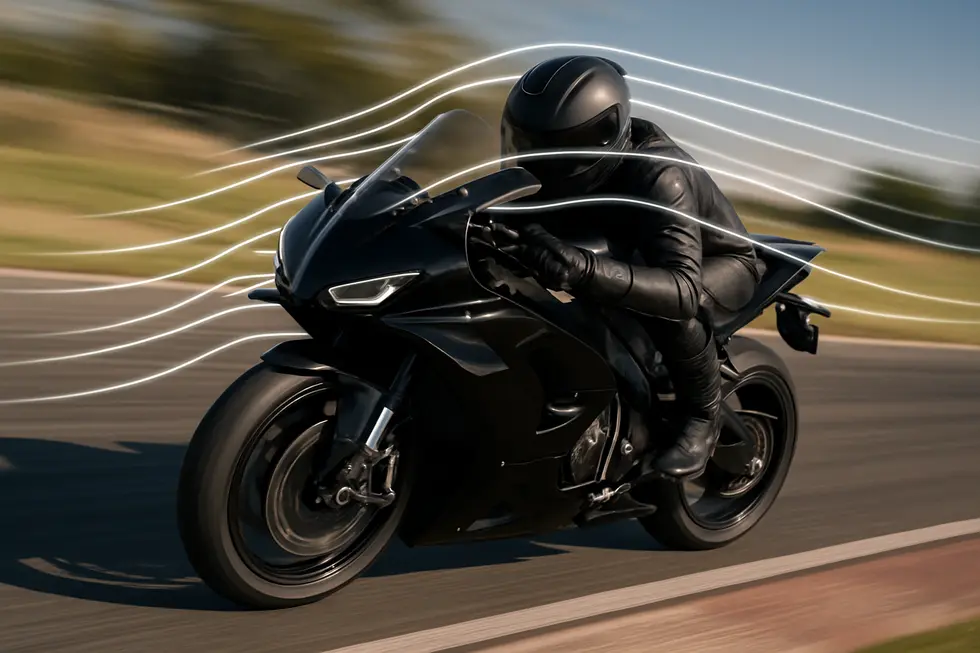
1. How Motorcycle Fairings Shape Aerodynamics to Boost Speed and Stability
Motorcycle fairings are engineered to refine the interaction between the bike and the air, primarily by minimizing drag and enhancing stability. By streamlining the motorcycle’s shape, fairings enable smoother airflow around the vehicle, which reduces turbulence that can sap engine power and limit top speed. This reduction in aerodynamic resistance allows motorcycles to achieve higher speeds more efficiently, conserving fuel while improving overall performance.
Another critical aerodynamic advantage lies in stability, especially when confronting crosswinds. Fairings mitigate the sideways forces wind exerts on both the motorcycle and rider, helping maintain balance and control during high-speed rides. This stability is essential not only for competitive racing scenarios but also for everyday safety and comfort during long-distance rides.
Certain fairings incorporate aerodynamic winglets or spoilers that generate subtle downforce. This force presses the tires more firmly against the road, enhancing grip and improving handling when cornering or accelerating. Such features allow riders to push their motorcycles harder with confidence in both straight-line stability and agile maneuvers.
The spectrum of fairing types—from full race fairings enveloping much of the bike to half fairings focusing on the upper front—offers riders various blends of aerodynamic efficiency and ease of maintenance. Well-maintained fairings, kept clean and free of damage, ensure optimal laminar airflow and thus preserve these aerodynamic benefits.
Beyond improving speed and control, fairings contribute to rider comfort and safety by shielding against wind buffeting, debris, and environmental elements. Their secure attachment to the motorcycle frame prevents vibration and wobbling, sustaining consistent aerodynamic performance throughout the ride.
For further insights and a visual explanation of how fairings contribute to safety, see the video “Do Motorcycle Fairings Improve Safety?”.
To explore a wide variety of designs and how fairings can tailor the riding experience, visit this page on exploring the best motorcycle fairings.
2. How Motorcycle Fairings Transform Performance through Aerodynamics and Rider Protection
Motorcycle fairings serve as more than just aesthetic enhancements; they are integral to boosting a bike’s performance by expertly managing airflow. By streamlining the motorcycle’s shape, fairings reduce drag, allowing the engine to operate more efficiently and achieve greater speeds with less effort. This aerodynamic advantage is particularly crucial in racing and high-speed scenarios where every bit of reduced air resistance can translate into improved lap times and fuel efficiency.
Beyond speed, fairings contribute significantly to stability. At high velocities, crosswinds and turbulence can unsettle a motorcycle, but the strategic design of fairings, sometimes incorporating aerodynamic wings or winglets, generates downforce that helps maintain tire grip and steadies the ride. This stability is key during cornering and sudden maneuvers, where consistent control makes a tangible difference in performance and safety.
Rider endurance also benefits substantially from fairings. By effectively deflecting wind away, they decrease rider fatigue caused by prolonged wind buffeting on long journeys. This comfort enables riders to maintain focus and responsiveness, indirectly enhancing overall ride quality and safety.
Protection extends to the motorcycle’s mechanical components too. Fairings shield vital engine parts and the frame from debris and weather conditions, helping reduce wear and maintenance issues. Different types of fairings—from full race fairings that cover extensive portions of the bike to half fairings providing moderate coverage—offer varying balances between aerodynamic gains and practical accessibility.
Understanding these multifaceted performance enhancements reveals why fairings are a critical feature in motorcycles designed for speed, distance, and improved riding experience. For those interested in exploring the variety and advantages of these components, discovering unmatched choices in motorcycle fairings offers valuable insight. Additionally, a detailed video discussion on how motorcycle fairings improve safety provides further depth on the subject.[1][https://blog.summitfairings.com/discover-unmatched-choices-in-motorcycle-fairings-at-summit-fairings/]
3. How Motorcycle Fairings Protect Riders and Enhance High-Speed Stability
Motorcycle fairings serve a vital dual purpose by blending protection with aerodynamic efficiency to elevate both safety and performance. They create a streamlined shell that reduces air resistance, allowing smoother airflow around the bike and rider. This significantly decreases wind drag, which not only contributes to higher achievable speeds but also improves stability during fast highway riding and sharp cornering. Riders benefit from reduced wind blast and turbulence, which lessens fatigue and helps maintain focus over longer journeys.
Beyond rider comfort, fairings protect critical mechanical parts such as the engine, frame, and control instruments from road debris and environmental elements. This shielding helps preserve motorcycle integrity and reduces wear caused by road conditions. From an aerodynamic perspective, fairings form a calm air pocket around the rider, buffering against unpredictable crosswinds that might otherwise destabilize the bike at speed.
Modern fairing designs often include integrated winglets and aerodynamic features that generate downforce. This downforce presses the tires more firmly against the road surface, enhancing grip during braking, acceleration, and corner entry. It also counteracts front wheel lift, a common issue on powerful motorcycles accelerating rapidly or descending hills. Such handling improvements make the bike more responsive, safer, and easier to control in dynamic riding conditions.
Innovations have also focused on directing airflow for optimized engine cooling. Fairings channel air efficiently toward radiators and oil coolers without increasing drag, maintaining a balance between aerodynamic gains and thermal management. This ensures consistent engine performance under demanding conditions.
Together, these protective and aerodynamic functions illustrate why fairings are indispensable on sport and highway motorcycles. They blend rider safety with enhanced handling and mechanical protection, solidifying their role as a critical component for improved control and comfort. For those interested in exploring fairing options that combine style and functionality, a valuable resource can be found at Summit Fairings.
External reference: Research on Motorcycle Aerodynamics.
4. Crafting Speed and Stability: Material and Design Innovations in Motorcycle Fairings
The material and design of a motorcycle fairing play pivotal roles in maximizing the aerodynamic and performance benefits that define this essential component. Fairings are engineered using lightweight yet resilient materials such as fiberglass, carbon fiber, and high-grade plastics. These materials balance the need for structural strength with minimal weight, allowing the motorcycle to maintain agility and speed without sacrificing durability or impact resistance.
Design-wise, the fairing’s shape is meticulously sculpted to reduce drag by channeling airflow smoothly around the bike and rider. Streamlined contours minimize turbulence, enabling higher velocity with less engine strain. Beyond reducing resistance, modern fairings often integrate aerodynamic features like winglets or small wings. These features generate downforce, pressing the bike onto the road to enhance tire grip and stabilize handling during aggressive cornering or crosswinds.
Critical to performance, well-designed fairings also manage airflow to maintain efficient cooling. By directing air precisely through radiators and oil coolers, fairings prevent overheating while preserving aerodynamic integrity. The level of coverage is another important design consideration: full fairings encompass almost the entire front and sides of the motorcycle to maximize aerodynamic gains and protection. Half fairings offer a compromise by covering upper front sections, delivering some aerodynamic benefits while allowing easier access for maintenance.
This synergy of advanced materials and aerodynamic design has become increasingly sophisticated. For instance, some cutting-edge sport motorcycles incorporate integrated winglets within their fairings that produce significant downforce, improving traction at high speeds without compromising cooling efficiency. Such innovations exemplify how material science and aerodynamic engineering converge to enhance speed, stability, and rider comfort.
For riders curious about selecting the ideal fairings to optimize performance and styling, exploring a comprehensive range of options can prove invaluable. You can discover unmatched choices in motorcycle fairings that align with these principles at Summit Fairings.
External reference: https://www.youtube.com/watch?v=WnfczCfYbi0
5. Maintaining Peak Aerodynamics: The Crucial Balance Between Fairing Efficiency and Upkeep
A motorcycle fairing’s aerodynamic benefits rely heavily on proper maintenance to sustain its efficiency and protective functions. By streamlining airflow around the bike, fairings reduce drag and promote stability, especially at high speeds where turbulence can undermine control. When a fairing’s surface becomes dirty or scuffed, the smooth laminar flow of air breaks down, increasing resistance and reducing speed subtly but significantly over time. Routine cleaning and waxing help preserve the fairing’s sleek surface, ensuring airflow remains uninterrupted and drag minimized.
Performance-oriented designs, like full or near-full race fairings, combine refined shapes with integrated elements such as winglets to generate downforce. This downforce enhances tire grip during cornering or braking without compromising the motorcycle’s agility. Maintaining the structural integrity of these features is vital, as any damage or looseness can disrupt airflow patterns and jeopardize safety. The fairing stay, a robust mounting bracket, plays an essential role by keeping the fairing securely attached and stable against wind pressure and vibrations.
Contemporary motorcycles often include adjustable components like windshields that let riders tailor wind protection to different postures and riding conditions, striking an adaptable balance between aerodynamic efficiency and comfort. This dynamic control allows riders to fine-tune airflow management, preventing excessive windblast during long commutes or enabling maximum streamlining during spirited riding.
Additionally, advanced fairings increasingly integrate cooling channels to direct airflow efficiently toward the engine, preventing overheating while maintaining high aerodynamic standards. Keeping these passageways clear and intact is part of fairing upkeep to guarantee both performance and reliability.
Ultimately, the synergy between meticulous maintenance and sophisticated fairing design ensures that aerodynamic advantages translate into lasting performance gains and rider safety. For more on optimal fairing choices and care tips, explore the best motorcycle fairings at Summit Fairings.
External Reference: Ducati Panigale V4’s innovative fairing details illustrate these principles in action, showing measurable improvements in downforce and cooling efficiency that balance speed and stability.
Chapter 3: Structural Components and Mounting: Exploring What is the Fairing on a Motorcycle
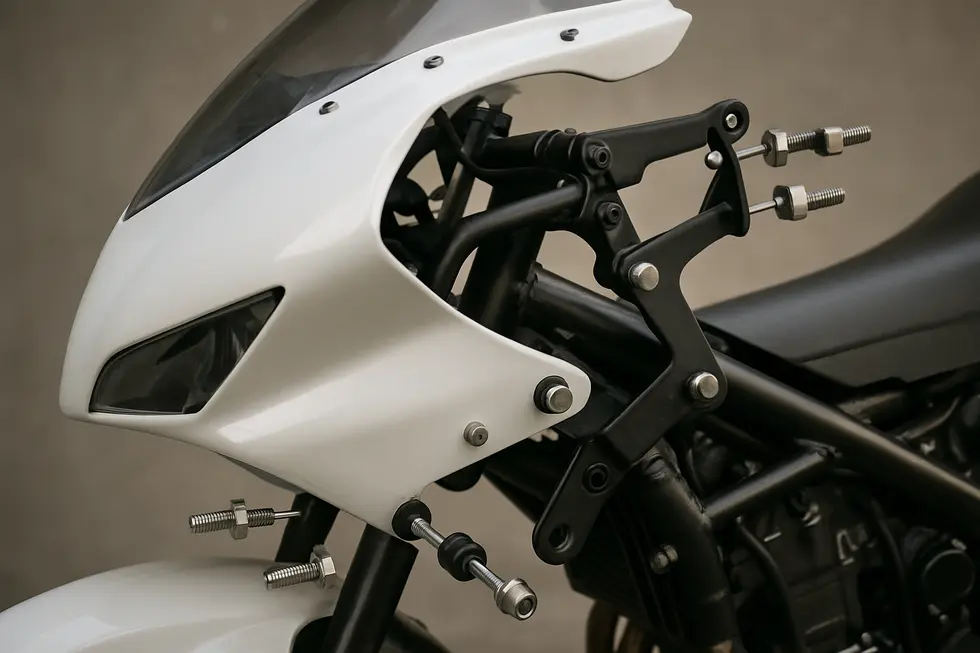
1. Composite Materials and Mounting Precision: Ensuring Fairing Strength and Stability on Motorcycles
The motorcycle fairing’s performance relies heavily on its material composition and mounting integrity. Typically crafted from engineered composites such as fiberglass, carbon fiber reinforced plastics (CFRP), and advanced thermoset resins, these materials are selected for their exceptional balance of lightweight properties and structural strength. Carbon fiber composites, in particular, offer a superior strength-to-weight ratio, making them a preferred choice for high-performance and racing motorcycles where both rigidity and minimal mass are crucial.
Maintaining the aerodynamic profile at high speeds demands that fairings resist flex and deformation under intense wind pressure. Composite materials enable designers to mold complex, streamlined shapes that enhance airflow while providing durability. This construction also integrates reinforced mounting points, allowing the fairing to attach firmly to the motorcycle’s frame via specialized brackets known as fairing stays. These stays are engineered to absorb vibrations and shocks without compromising alignment or causing unwanted movement.
A well-secured fairing not only preserves aerodynamic advantages but also contributes to rider safety by shielding against debris and minor impact forces. The composite shell’s strength ensures it performs consistently under dynamic loads experienced during acceleration and cornering. Through careful selection of materials and the precision of mounting design, fairings achieve a vital combination of aerodynamic efficiency and structural integrity. This integration elevates overall motorcycle handling and rider comfort by reducing vibration and wind buffeting.
To explore the advances in composite technologies shaping modern fairings, the insights from Hexcel’s work on composites manufacturing provide valuable context for understanding these sophisticated structural components (source 4). Alongside material advances, mastering the mounting system’s design is equally critical for sustaining fairing stability and preserving its functional roles over long-term use.
For riders seeking to understand how high-quality fairings combine material innovation with structural design, discovering a wide range of motorcycle fairings offers practical insights into these core principles.
2. Secure Attachment and Advanced Mounting Systems That Shape Motorcycle Fairings
A motorcycle fairing’s efficiency and reliability hinge significantly on how it is mounted to the bike’s frame. Unlike a mere cosmetic addition, the fairing serves as a critical structural element that must withstand varying forces from wind pressure, vibration, and impacts during riding. Its attachment systems are engineered to ensure a secure, stable fit that preserves aerodynamic advantages and rider comfort.
Modern fairings are commonly secured through a combination of precision-engineered brackets and fasteners, including bolts, clips, and reinforcing stays. These mounting points are strategically placed across the motorcycle’s frame to distribute mechanical stress evenly and prevent wobble or detachment under dynamic conditions. The “fairing stay”—an integral bracket assembly—forms a rigid backbone that supports the entire front bodywork. This component is vital for maintaining the fairing’s alignment and aerodynamics, especially at high speeds where even subtle movement can degrade performance.
Materials used in manufacturing fairings add another layer of complexity to the mounting process. Lightweight composites like fiberglass and carbon fiber are favored for their strength-to-weight ratio, but they require exacting bonding and fastening techniques to prevent damage or cracking. The integration of these materials with mounting hardware demands precision engineering to achieve durability without adding unnecessary weight.
Additionally, advancement in design has brought quick-release attachment solutions that simplify maintenance and customization. These allow riders to remove or replace fairings rapidly without compromising the firmness of the connection when reassembled. Such systems balance practicality with the rigorous demands of aerodynamic integrity.
This careful orchestration of materials, mounting points, and attachment mechanisms ensures that fairings not only improve a motorcycle’s aerodynamic profile but also remain securely fixed through varying riding conditions. For those seeking a deeper understanding of the models and options for fairings, exploring choices from dedicated retailers can reveal how mounting systems complement overall motorcycle performance. For a thorough selection and insight into fairing designs, consider visiting Summit Fairings’ blog.
3. How Motorcycle Fairings Shape Aerodynamics and Boost Performance Through Smart Mounting
A motorcycle fairing functions as a critical aerodynamic shell, sculpted to streamline airflow and significantly reduce drag. By covering the front, sides, and sometimes the lower parts of a bike, it creates a smooth profile that minimizes turbulence around both the rider and the machine. This streamlined shape not only cuts air resistance but directly enhances stability, especially by mitigating the destabilizing effects of crosswinds. This stability is vital at high speeds when the smallest aerodynamic inefficiency can compromise control.
Many high-performance motorcycles employ fairings engineered to generate downforce, often incorporating winglets or integrated aerodynamic surfaces. These elements press the bike onto the road, increasing tire grip during high-speed cornering and straight-line riding. This additional grip translates into improved handling precision and rider confidence.
Besides speed gains—sometimes reaching velocities near 300 km/h—well-designed fairings contribute to rider endurance by reducing wind buffeting and exposure to debris. The protection offered by the aerodynamic bodywork can significantly decrease fatigue on long rides, helping maintain focus and comfort.
Equally important is the fairing’s secure attachment to the motorcycle frame. The mounting system, commonly known as the fairing stay, provides structural integrity that resists vibration and wind forces encountered during riding. Proper mounting ensures the aerodynamic shape remains stable, preventing wobble or unwanted flexing that could diminish performance and safety.
Maintaining the fairing’s surface by keeping it clean and polished can further optimize airflow by promoting laminar flow, subtly enhancing speed and fuel efficiency over time. This interaction between surface condition and aerodynamic function highlights the fairing’s role as both a structural and performance component.
For a closer look into these aerodynamic principles and their impact, check this detailed video: https://www.youtube.com/watch?v=HO5gYgTOCDI.
Explore more insights on fairing designs and their importance at Summit Fairings’ blog.
4. How Motorcycle Fairings Enhance Rider Protection and Structural Safety
Motorcycle fairings play a pivotal role that goes beyond sleek aesthetics and aerodynamic benefits. These carefully designed shells cover and shield vital parts of the bike, such as the engine, frame, and handlebars, creating a protective barrier against environmental hazards like wind, debris, and harsh weather. By deflecting strong airflows, fairings reduce fatigue on the rider caused by wind buffeting, which directly contributes to enhanced comfort and focus during long or high-speed rides.
The structural integrity of the fairing itself, along with its secure attachment through the fairing stay brackets, ensures it remains stable under extreme conditions. This effectively prevents vibrations or detachment even at high speeds, maintaining consistent aerodynamic performance and safety. During incidents like minor collisions or road debris impacts, the fairing absorbs and disperses some of the force, helping protect critical motorcycle components from damage.
Furthermore, the design of modern fairings has evolved to include aerodynamic wings or vents that not only optimize airflow but also generate downforce, increasing stability and reducing dangerous front wheel lift moments. Such features actively improve rider control and safety, especially during rapid acceleration or cornering. The balance between protection, rider comfort, and performance is key in choosing the appropriate fairing type, from full fairings that envelop large areas of the bike to partial designs that offer targeted coverage.
For riders looking to deepen their understanding of how fairings contribute to race motorcycle safety and efficiency, this detailed overview from The Racing Xpert provides valuable insights: https://www.youtube.com/watch?v=WnfczCfYbi0. To explore a wide range of fairing options that blend protective function with aerodynamic design, consider visiting this comprehensive resource on motorcycle fairings.
Ultimately, motorcycle fairings are indispensable structural components that merge aerodynamic science with protective qualities, safeguarding the motorcycle’s core while enhancing the rider’s safety and ride experience.
5. Innovative Fairing Designs and Secure Mounting: A Structural Insight into Motorcycle Fairings
Motorcycle fairings serve as integral structural elements that enhance aerodynamics while protecting the rider and critical components. These molded panels, commonly crafted from lightweight and durable materials such as ABS plastic, precisely fit onto the motorcycle’s frame, offering both form and function. Their design sophistication revolves around achieving an optimal balance between rigidity and lightness, key to withstanding high-speed wind pressures without compromising overall handling or adding unnecessary weight.
Fairings are broadly categorized by their coverage and utility. Full fairings envelop the front and sides, shielding the engine and mechanical parts, delivering maximum aerodynamic efficiency and enhanced protection against wind and debris. Half fairings focus on the upper front section, improving rider comfort and reducing drag while leaving more mechanics exposed. At the minimalist end, quarter fairings or fly screens cover just the headlight or upper fork area to provide basic wind deflection. Additionally, tank covers and tail sections complement these categories by contributing to the bike’s styling coherence and aerodynamic profile.
Mounting these fairings demands robust, precisely engineered brackets known as fairing stays. These brackets anchor to reinforced chassis points—often on twin-spar frames—ensuring the fairing remains stable under intense vibration and wind forces. This secure attachment is vital for maintaining consistent aerodynamic performance and rider safety, preventing wobbling or detachment at speed.
Many fairings integrate functional elements like windscreens or headlight buckets directly into their design, streamlining assembly and enhancing aerodynamic flow. Meanwhile, finishes such as faux carbon fiber textures or geometric vinyl graphics blend stylistic appeal with technical excellence, accommodating both performance and personalized aesthetics.
For those interested in exploring comprehensive options that combine these advanced structural and mounting principles, an extensive variety of motorcycle fairings are available, showcasing how precision engineering can transform both ride quality and visual style. To learn more about these designs and their detailed applications, visit Explore the Best Motorcycle Fairings at Summit Fairings.
For additional technical insights into modern aerodynamic enhancements integrated within fairing structures, the 2025 Ducati Panigale V4’s use of aerodynamic wings offers a prime example of fairing evolution, demonstrating how integrated components can generate downforce and improve cooling efficiency, directly impacting safety and performance.
Final thoughts
Motorcycle fairings are far more than aesthetic components; they represent a strategic investment in enhancing speed, stability, rider protection, and comfort. For business owners, a thorough understanding of fairing types, aerodynamic benefits, and structural mounting is essential not only to meet rider expectations but also to stay competitive in a market driven by performance and innovation. Prioritizing high-quality fairings and educating customers about their tangible advantages can lead to increased sales, improved brand reputation, and long-term loyalty. As motorcycle designs continue to evolve, so does the critical role of fairings in maximizing every ride’s potential.
Ready to elevate your ride? Summit Fairings delivers premium, custom-fit fairings that blend style and durability. Whether you’re chasing speed or turning heads, we’ve got your bike covered. Don’t wait—transform your machine today. Click, customize, and ride with confidence. Your perfect fairing is just a few clicks away. Act now!
About us
We are one of the leading motorcycle fairing export sites, offering over 3,000 styles across nearly all motorcycle models. Buy directly from summitfairings.com and save 10-40% compared to other sites. Customer support is our priority; if you have any questions, we promise to provide answers within six hours to keep your buying experience seamless and informed.
RELATED POSTS
View all

